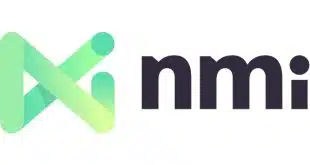With EMV chip card payments coming and mobile wallets using near-field communication already here, merchant acquirers are beginning to roll out their own hardware and software to handle the new technologies. This week, the big merchant acquirer Chase Paymentech introduced its “Future Proof” point-of-sale terminal and earlier this month, Merchant Warehouse, an independent sales organization, unveiled a service called “Genius” that includes a terminal and software platform for processing card and mobile-wallet transactions.
The rollouts are part of what industry insiders and researchers are calling a “reterminalization” as the march of the Europay-MasterCard-Visa chip card standard and mobile payments makes many existing terminals that read only magnetic stripes obsolete.
Dallas-based Chase Paymentech, a subsidiary of JPMorgan Chase & Co. and one of the nation’s biggest acquirers, says the Future Proof terminal is aimed mainly at small businesses and handles mag-stripe cards, EMV chip cards, contactless cards, and mobile wallets. The terminal is an Ingenico iCT250 from Ingenico North America reconfigured with Chase software and branding.
The major payment card networks have announced initiatives to move the U.S. toward EMV and NFC mobile payments, notes Robert Nadeau, group executive of product development at Chase Paymentech. Those initiatives will take a while, but any merchant who buys a mag-stripe-only terminal in the next year or so will have to replace it again fairly soon, so Chase Paymentech decided to come out with an EMV-NFC terminal now, he says.
“There is a need growing for our customers to accept EMV transactions … and NFC mobile wallets,” he says. Pricing for the terminal depends on the volume and other factors; some merchants might qualify for free terminals, according to Nadeau.
Chase Paymentech will offer the terminals through Chase Bank’s 5,300 branches and its direct sales force. There are no current plans to sell them through ISOs. A “couple thousand” Future Proof terminals already are in the marketplace, says Nadeau, adding that Chase Paymentech also will make Future Proof’s software available to merchants who want to use their own hardware.
Chase Paymentech’s terminal is a “very significant” development, says Rick Oglesby, a senior analyst at Boston-based Aite Group LLC. “Paymentech is a top acquirer who is making a big move towards standardizing EMV and NFC technology in their terminals,” he tells Digital Transactions News by e-mail. “They are working in alignment with the rest of the industry and this is a sign that EMV/NFC terminalization is now starting to take off.”
Nadeau won’t disclose Chase Paymentech’s merchant base, but the acquirer processed 24 billion transactions and $553 billion in charge volume last year.
Meanwhile, Merchant Warehouse is promoting its Genius system as a “customer-engagement platform” for processing existing and future payment types, including EMV, NFC, QR bar codes and various mobile wallets that aim to drive traffic to merchants’ physical locations and Web sites through promotions and loyalty programs.
“We’ve kind of crammed everything we know about payments into one product and one platform,” says Henry Helgeson, co-chief executive officer at Boston-based Merchant Warehouse. The ISO has 80,000 merchants that generate $8 billion in annualized charge volume.
The first release of Genius will come later this summer and be aimed at retailers and quick-service restaurants. The platform is based on VeriFone Systems Inc.’s MX line of terminals, but the key software comes from Merchant Warehouse. The first terminal to be deployed will be a version of the VeriFone MX 880, to be followed by a version of the MX 915 that has a 4.3-inch display and accepts EMV, NFC, and PIN-based payments.
Like Chase Paymentech, Merchant Warehouse took a hard look at new payment services after Visa Inc. announced its incentives for acquirers and merchants to adopt EMV and NFC-based mobile payments last August, later followed by MasterCard Inc. and Discover Financial Services. At that point, the acquirer concluded, “We’re going to have to go out and re-terminalize our base,” says Helgeson.
While NFC mobile wallets such as Google Inc.’s Google Wallet and the Isis wallet from AT&T Mobility, Verizon Wireless, and T-Mobile have generated more publicity than actual transactions so far, Helgeson figures they and other wallets eventually will generate plenty of volume, and Genius will put Merchant Warehouse in a position to capitalize on the trend. “What we’re hoping to do is give our merchants access to those tens of millions of customers that will have these mobile wallets in the next 10 years,” he says.
Genius’s beta version will include the 2D-barcode-based LevelUp mobile-payments system, though the general release won’t include LevelUp but will enable merchants to download that service.
Helgeson would not give specifics about pricing but says Merchant Warehouse will subsidize the cost of the terminal to some degree, with merchant pricing also being affected by advertising programs available through the program. He predicts that “tens of thousands” of Merchant Warehouse’s merchants will use Genius by the end of 2013.
A key goal of the program is to give merchants hardware and software so enticing that they’ll be less sensitive to sales pitches from rival acquirers offering lower pricing. “I think the discount rate becomes somewhat irrelevant under the new plan,” says Helgeson. “If we can drive consumers through their front door, what is that worth?”
Aite’s Oglesby says Merchant Warehouse is among the acquirers beginning to integrate payments with wallets and non-payment services that increase merchants’ sales. “It’s a way to expand the market,” he says. “I think we’re going to see a lot more of it.”



